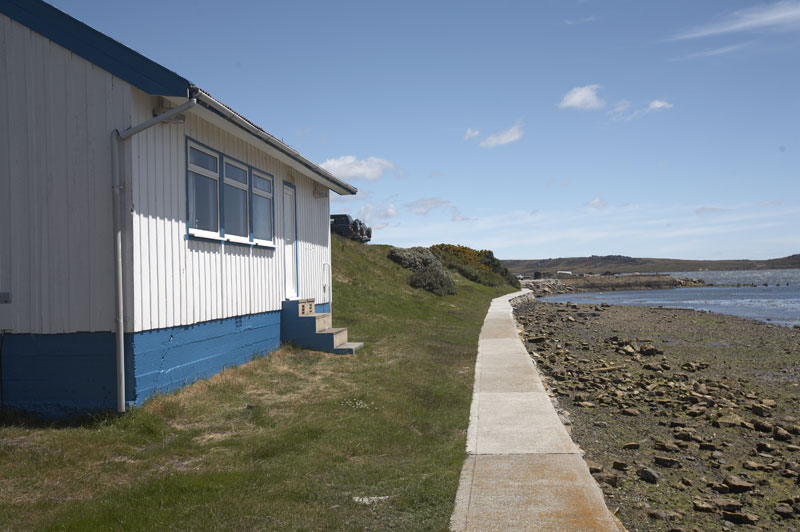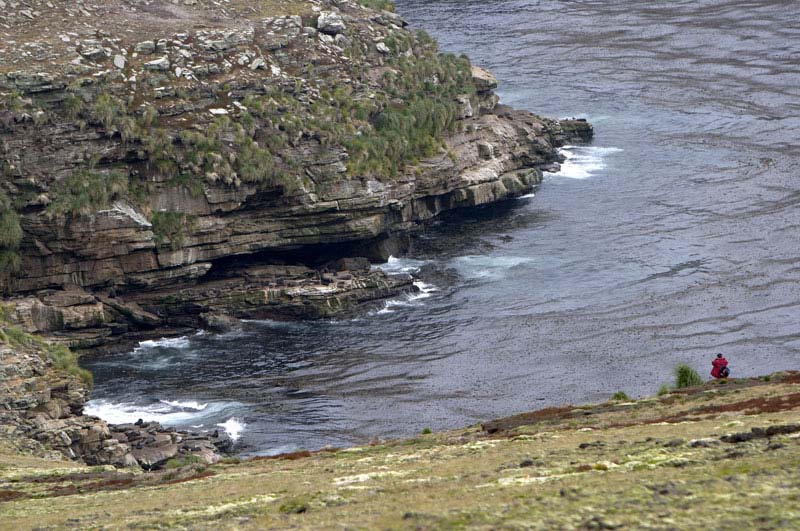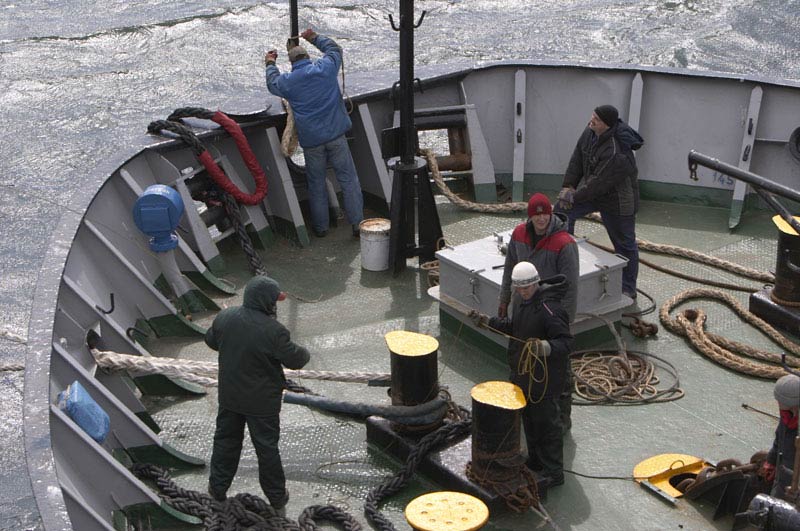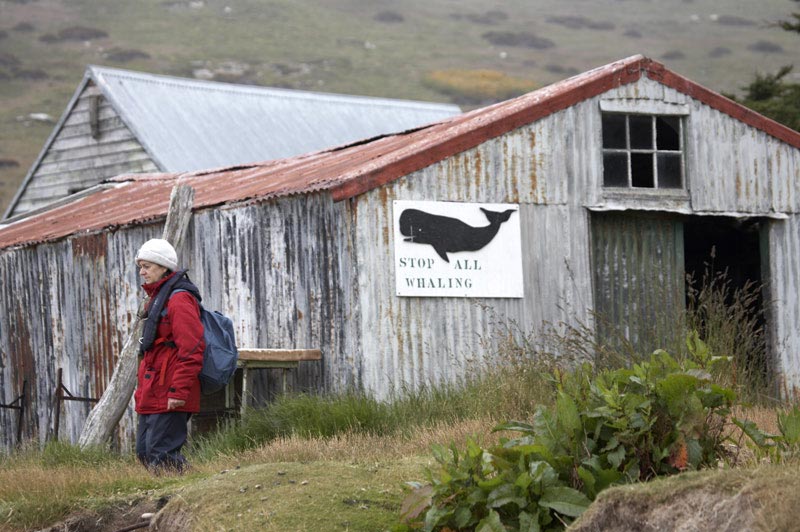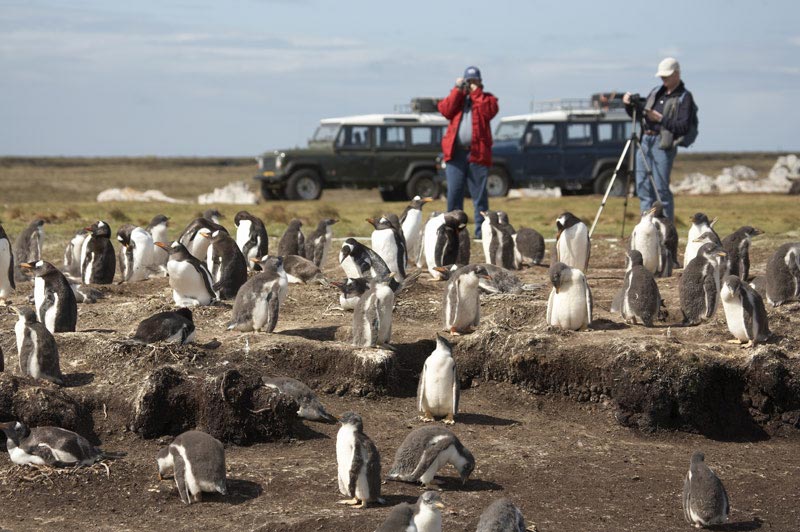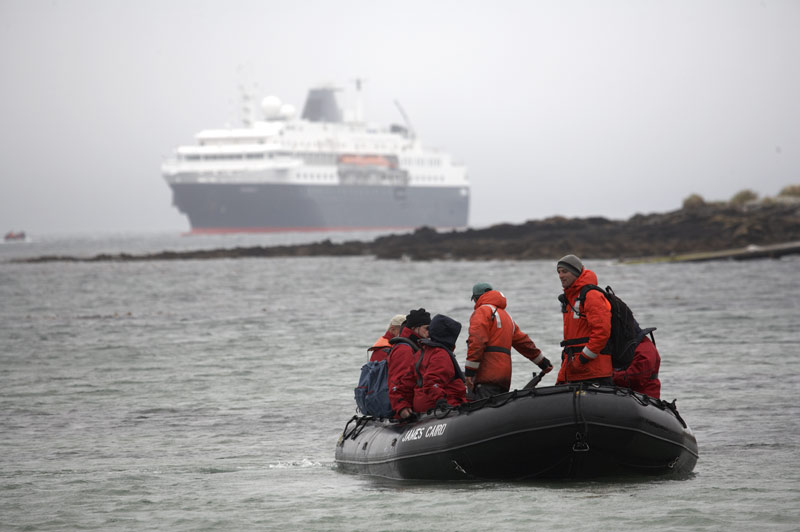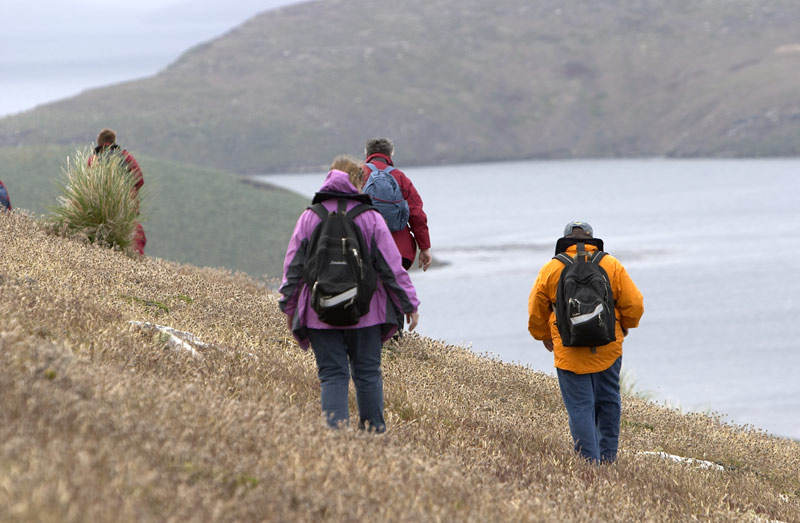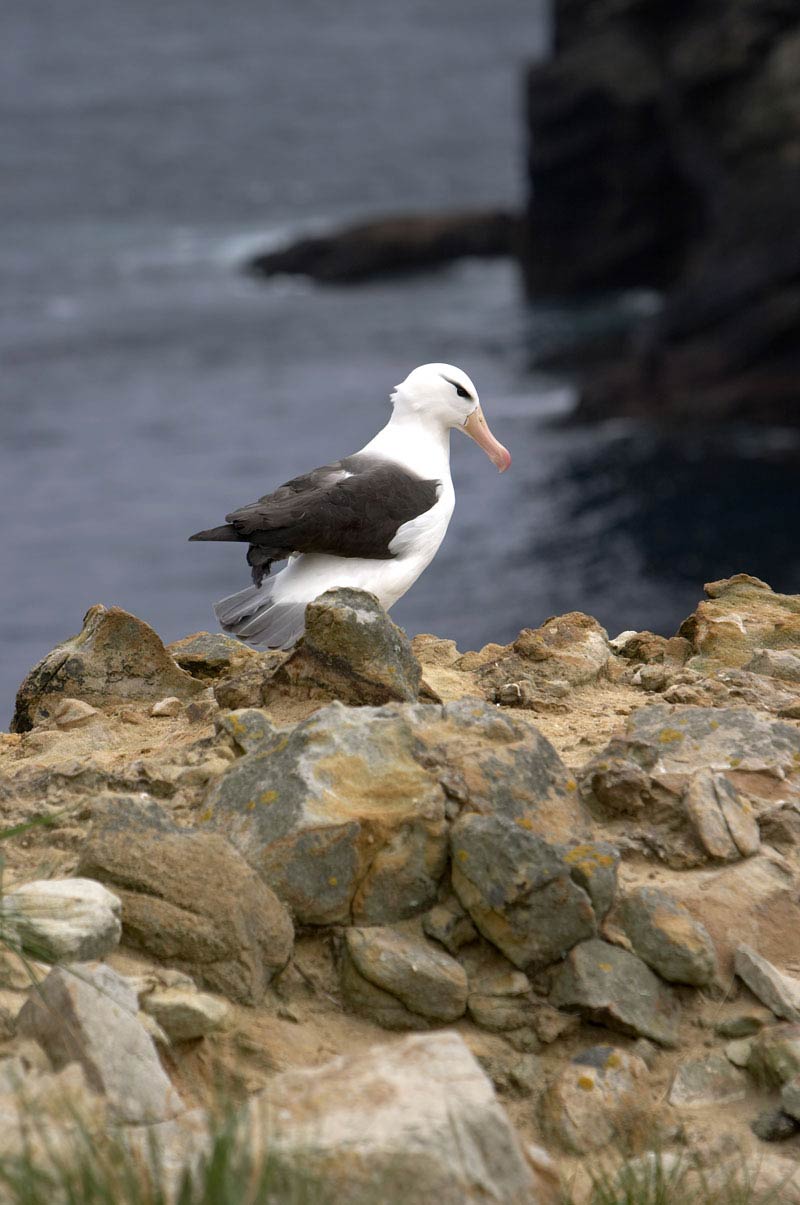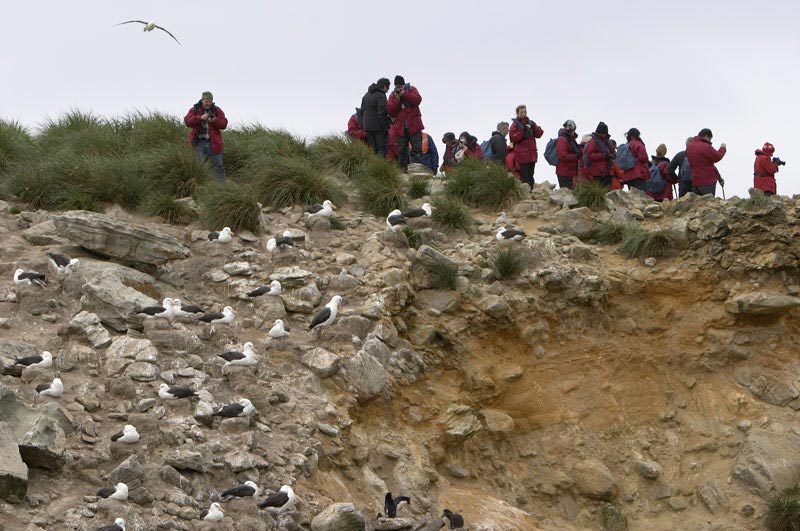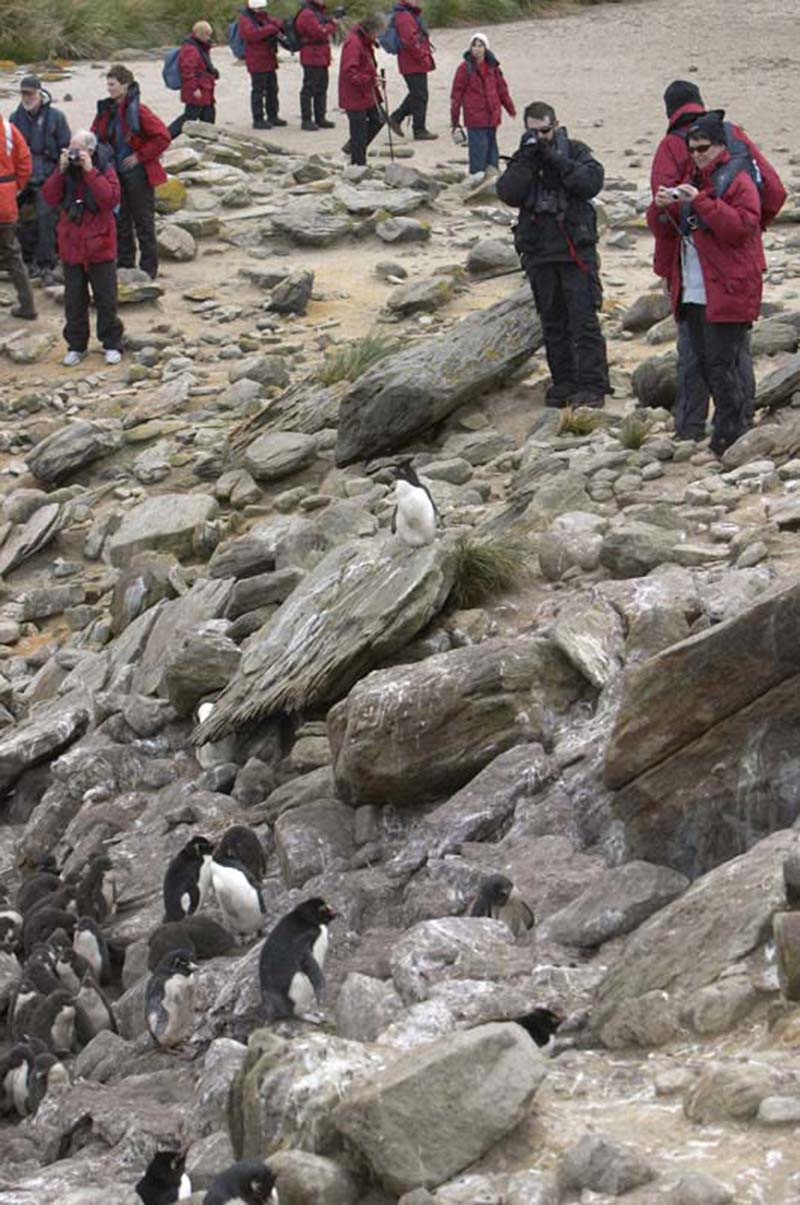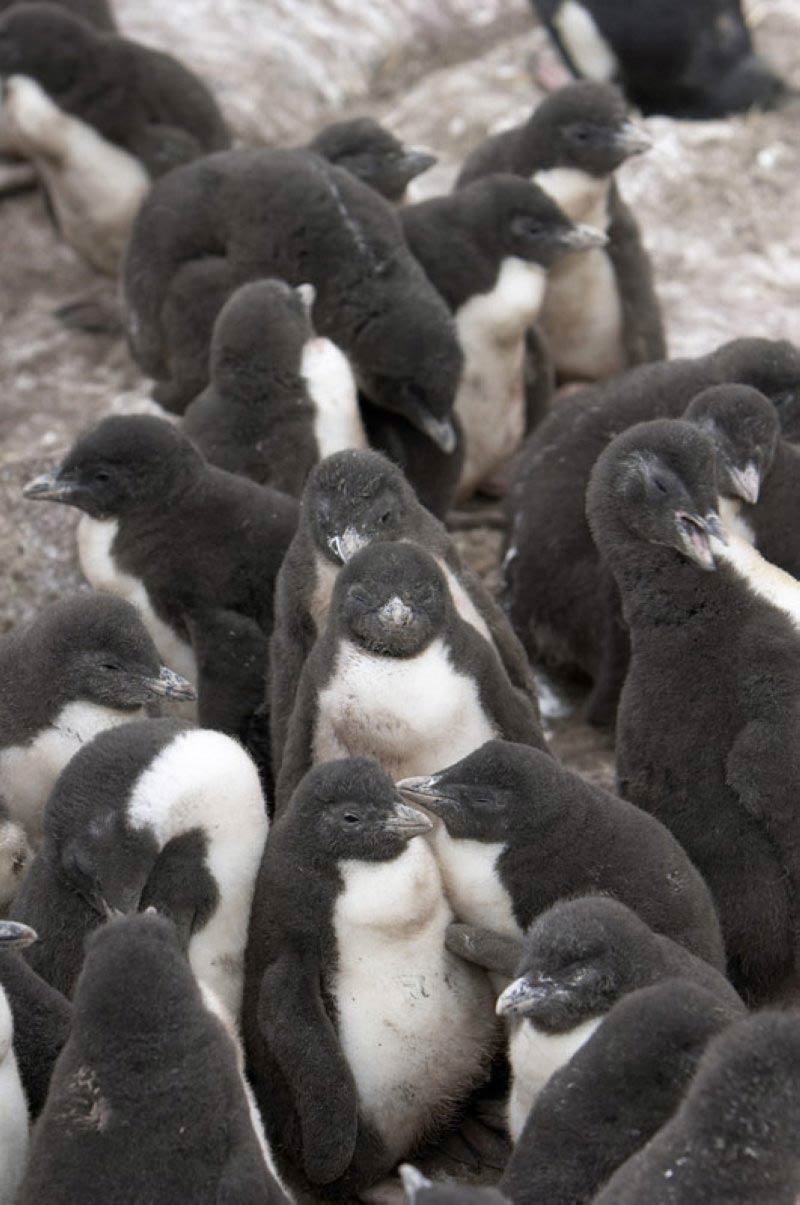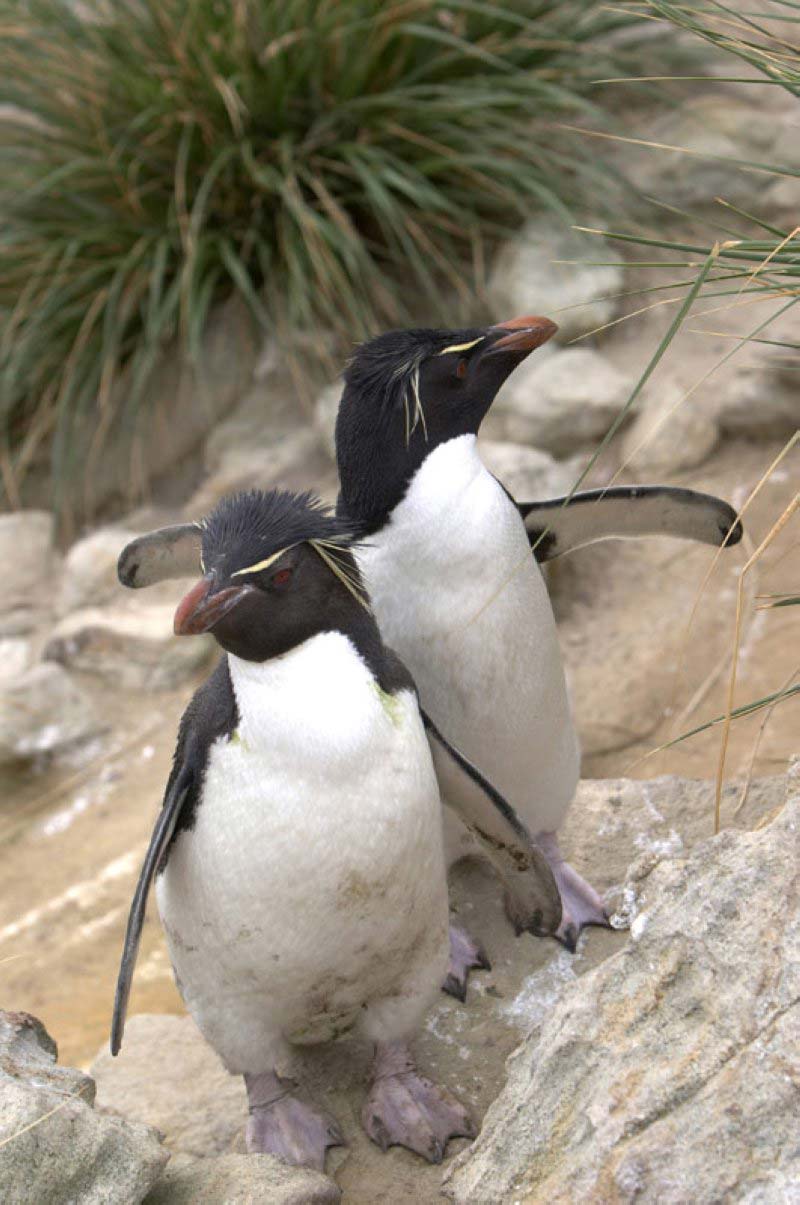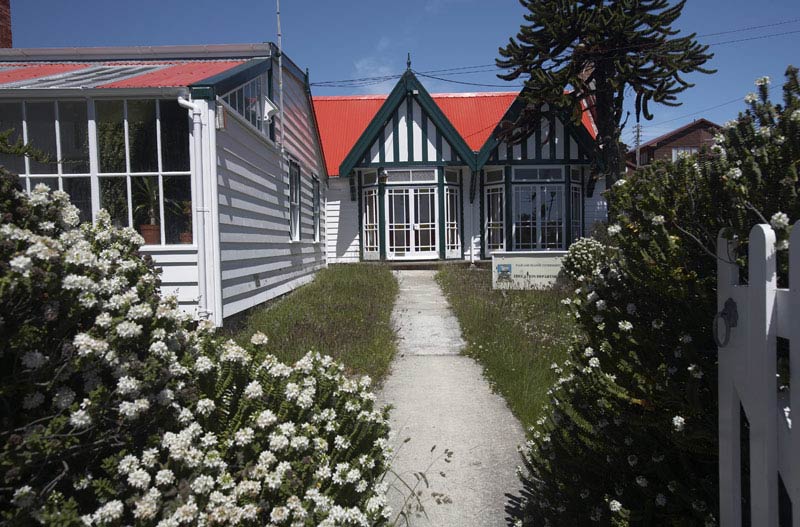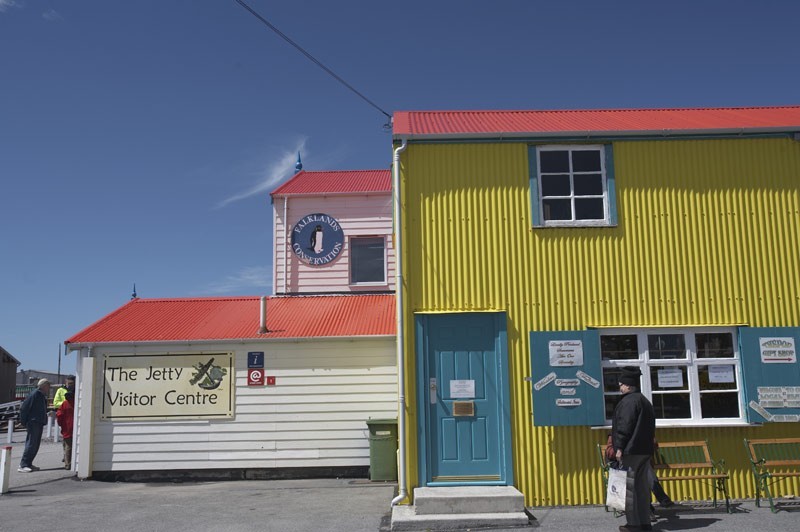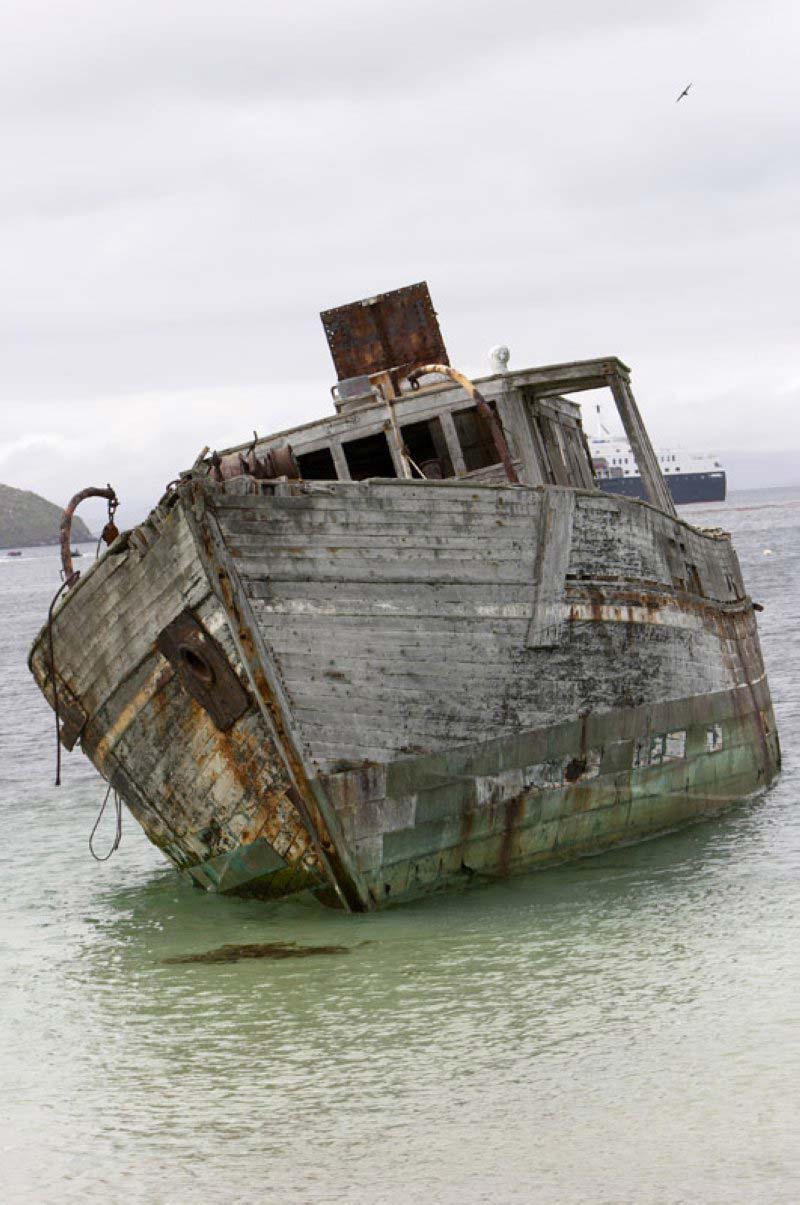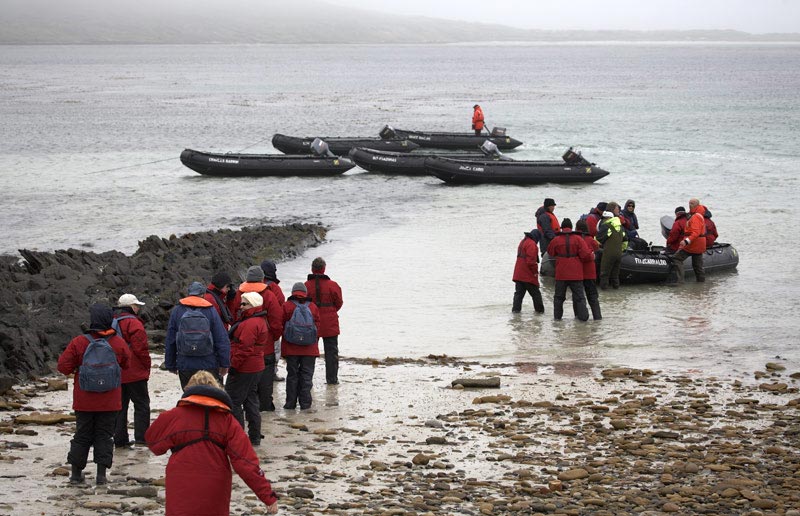In 1982 Argentina invaded the Falkland Islands, turning the British colony into a combat zone. Although news images of cold, barren, snow-covered battlefields continue to linger in the minds of television audiences around the world, on a Falkland Islands cruise I learn that this is far from the truth.
The haunting landscape has an unspoilt rock-strewn beauty with white sandy beaches and moss-covered rolling hills.
Summer days are long and sunny while winter brings only a light sprinkle of snow. The former battlefields attract tourists who visit the islands for its off-the-beaten-path appeal.
Falkland Islands Cruise
Cruising the Falkland Islands (made up of over 700 windswept islands around 483 kilometres east of Argentina’s mainland) on a luxury expedition ship from Ushuaia in Argentina allows us to explore remote areas of the islands without forgoing city comforts.
On board, there are no casinos or Las Vegas-style stage shows to keep us entertained. Instead, sea days are filled with lectures delivered by ornithologists, historians, geologists and research scientists.
Lecture topics range from Southern Ocean birds to life on the Falkland Islands, history of the war to fishing and marine life.
We learn interesting and bizarre facts such as the male anglerfish fuses to the female’s body and eventually withers to become a minor appendage.
Sea days are followed by landing days where Zodiacs (inflatable black rubber dinghies) transfer us ashore.
Some mornings we wake to the soft Brazilian drawl of our expedition leader, coaxing us out of bed, with an overview of the morning’s landing.
Zodiac ride, Carcass Island
Our first wet landing is at New Island, the westernmost inhabited island of the Falklands archipelago where I go on a three-hour hike.
I’m way over dressed wearing waterproof pants over my jeans, two pairs of socks and rubber boots, a red polar jacket supplied by the ship and a thermal undershirt.
We hike past fragrant ferns and yellow blooms of sea cabbage.
One of the ship’s naturalists points out a striated caracara staring curiously as I struggle up a steep section.
I stop for a photograph; its hooked beak and black plumage reminds me of a falcon.
New Island along with Carcass Island (our next landing spot) are a paradise for smaller birds as there are no introduced rats like there are in many other islands in the Falklands.
It’s a steady uphill walk to reach the top of the cliff where 400-million-year-old sandstone bluffs tower above the South Atlantic Ocean.
A strong gust of wind almost knocks me off my feet as I peer at hundreds of plump fur seals flopped on the flat rocks below.
Further along, at the bird rookery, black-browed albatrosses, rockhopper penguins and blue-eyed shags nest comfortably together.
A blue-eyed shag with bright yellow caruncles on its bill feeds a ravenous grey chick which thrusts its head inside its parent’s mouth.
Rockhoppers are easily identified from other kinds of penguins by their long yellow head-tassels which bounce as they hop from rock to rock.
Fluffy penguin chicks gather in tight clusters known as creches. The ship’s ornithologist tells us that the chicks usually join the creche at three weeks of age after being incubated by both rockhopper parents.
The male guards the chick first while the female goes fishing (hooray for women’s liberation!). Rockhoppers are the smallest polar penguin.
They weigh 2.5 kilograms and stand around 55 centimetres tall. This is tiny compared to the largest penguin around the Southern Ocean, which is the 30kg 115cm emperor penguin.
When it’s time to go, I reluctantly tear myself away from the amusing antics of the penguins and birds. But there’s lots more wildlife spotting to come.
We see black oystercatchers with bright orange beaks, jackass penguins and waterfowl wading along the shores, and a colony of over 1600 gentoo penguins.
The adult gentoo penguins waddle a long distance from the ocean, probably a couple of kilometres, across fields to return with krill for their chicks.
Colourful buildings, Stanley
From Stanley, you can tour the battlefields of the Falklands War or visit a sheep farm or wander amongst brightly painted buildings.
Stanley is small. It’s main sights are within walking distance of each other and include the Chirst Church Cathedral (with its distinctive arch of four blue whale jaw bones and vibrant lupine garden), the war memorial and Falkland Islands Museum.
There are souvenir shops, craft shops and, like any good British outpost, there’s no shortage of English pubs.
Discover Falkland Islands
The best time to travel to the Falkland Islands is from October to April, when the average summer temperature is 15°C.
Pack seasick medication, sunscreen, sunglasses and lip balm. Dress in layers as the weather can change suddenly. As baggage limits can pose a problem, look for warm lightweight layers.
Cruising there
Cruise Traveller has a number of expedition cruises.
More
Falkland Islands Tourist Board
A good destination for cruising is the Amazon in Peru. Check out this post.
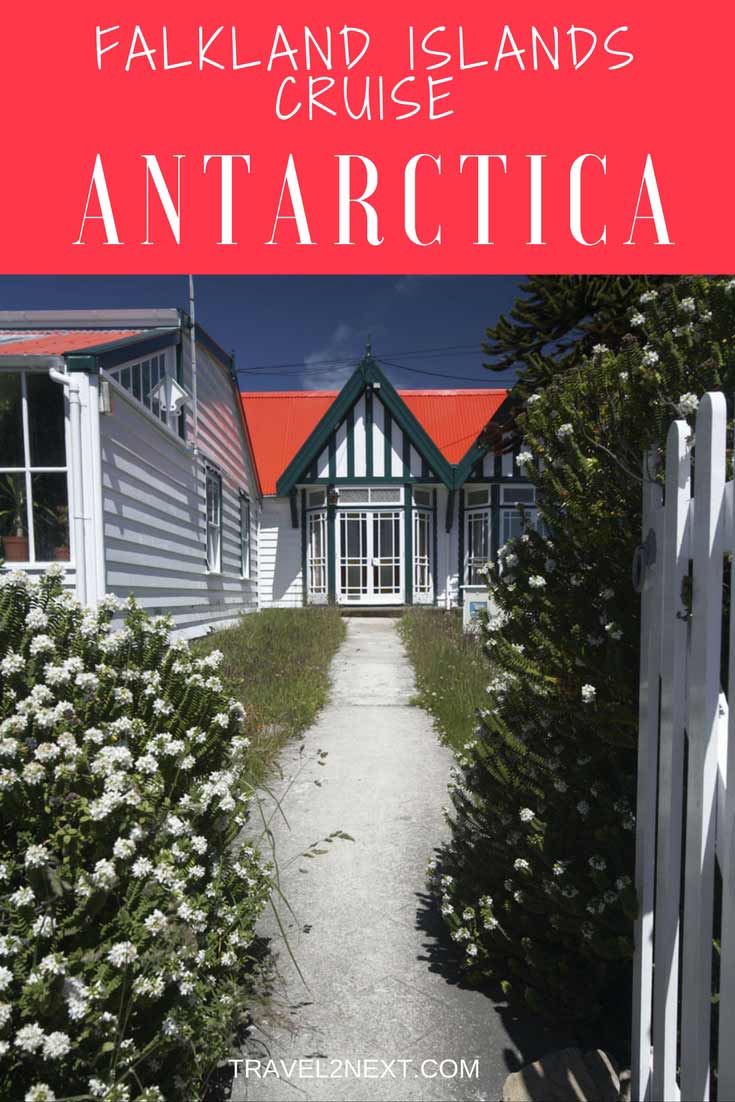
Plan Your Trip

Rent A Car – Find the best car rental rates at Discover Cars. They compare car hire companies to provide you with the best deal right now.

Find A Hotel – If you’re curious about this article and are looking for somewhere to stay, take a look at these amazing hotels.
